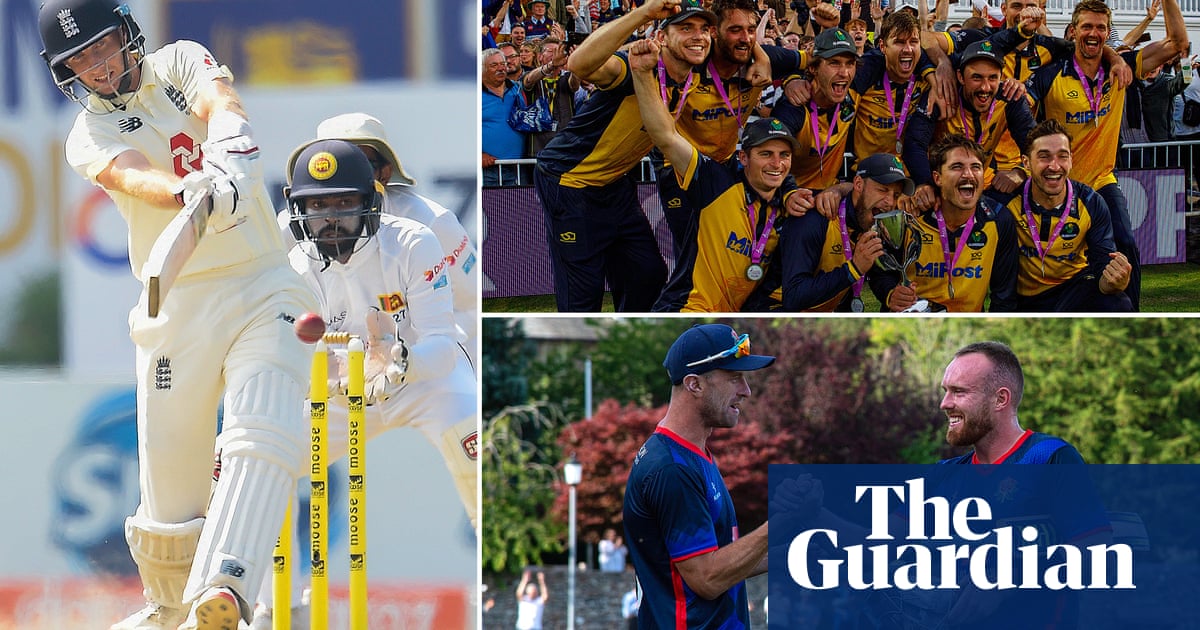Three memories of cricket in 2021 - 4 minutes read

1) Joe Root punches the ball backward of point for runs
Joe Root started 2021 by making 228 and 186 as England beat Sri Lanka 2-0 in Galle. His brilliance was half the story – the other half was that only Dan Lawrence (remember him?) scored more than 60 in either match for the visitors. It was an indication of how much England would rely on their captain not just for runs, but as a leader on the field and, off it, the acceptable face of cricket under fire. He did not always deliver all parts of that brief – no person could, such was that burden – but nobody could accuse him of not trying.
Another double ton would come soon enough in the remarkable win at Chennai and three more centuries would be logged against India in the home series, each characterised by his scurrying singles, his relentless will to take the game to his opponents and, though sometimes rather wan, a smile that reminded us (and him) that it is only a game after all.
If his selections and field placings often leave much to be desired, there is mitigation when one considers what he must feel, so often walking to the middle with the scoreboard showing 20-odd for two, knowing that his team’s chances are, once again, resting on his shoulders. More often than not, he’s soon up on his toes, bat ramrod straight in meeting a length ball on a fourth stump line, the ball despatched just backward of point for runs. Like much of his work in 2021, it looks routine or easy, but it’s not. If it were, more would do it too.
Termly fees at Sedbergh School are just shy of £9,000 in 2021, with another £3,000 on top for boarders. It was founded in 1525 and is not even in Lancashire; it is nestled in the hills of what is now Cumbria. But it might as well be located in Beverley Hills in terms of accessibility to the communities of Burnley and Blackburn, 50 miles and a world away. (I’m sure there are impressive outreach and bursary schemes run by the school, but the point will still hold).
Sussex travelled a distance about as great as county cricket offers with a team overloaded with teenagers, many of whom would have recognised the privilege that leaks from every square inch of such schools – the game is, alas, still largely populated by sons and daughters of privilege. Lancashire fielded an XI comprising mainly hardened pros, led by the granite tough Dane Vilas, not one to give an inch. Sussex’s kids didn’t need one.
The match was a thriller (your correspondent dedicated an entire weekly column to it), but it was also an example of a rather unfashionable concept these days, one captured by Orson Wells’ iconic speech in The Third Man. You do not have to be as amoral as Harry Lime to acknowledge how cricket’s heritage shapes the game and to join demands that things change and change now – and, simultaneously, to see the beauty in what that heritage has bequeathed us.
County cricket clubs are just that – clubs based in their counties. They are not owned by an oil state or oligarch and not, when you peel away a bit of conference hosting and a handful of other income streams, run much differently than they were two or three generations ago.
That’s a double-edged sword, as cultures can be embedded, passed down without challenge and complacency about a changing world (sporting and social) can create an inertia that does no good to anyone. In such circumstances, words come easily, actions less so.
But there’s another side to the county cricket club structure, one that was on show in the Royal London One-Day Cup final. The ECB had styled it a “development competition”, hid it away at Trent Bridge on a Thursday and treated it like one would an embarrassing uncle at a Christmas lunch.
Nobody told Glamorgan and Durham, who played a fine cricket match, full of skills and emotion. When Glamorgan secured their first trophy in 17 years, their players and fans celebrated like they had won, well, the Gillette Cup in the 70s, this competition’s forebear.
And what a delight it was to see Kiran Carlson, Glamorgan’s young Cardiff-born captain, lead his men to their fans, beer in hand to toast a trophy they had not even received as yet, the sponsors very much second in the players’ priorities. Conversations sparked up and photos were taken, supporters and players looked like what they are – members of the same club.
Source: The Guardian
Powered by NewsAPI.org